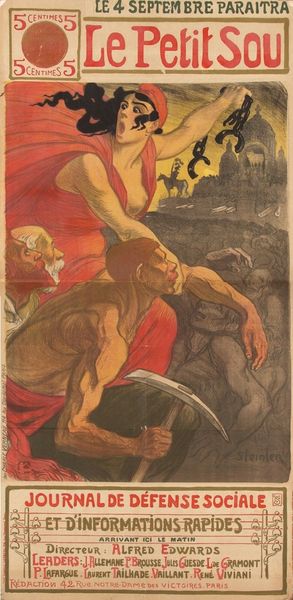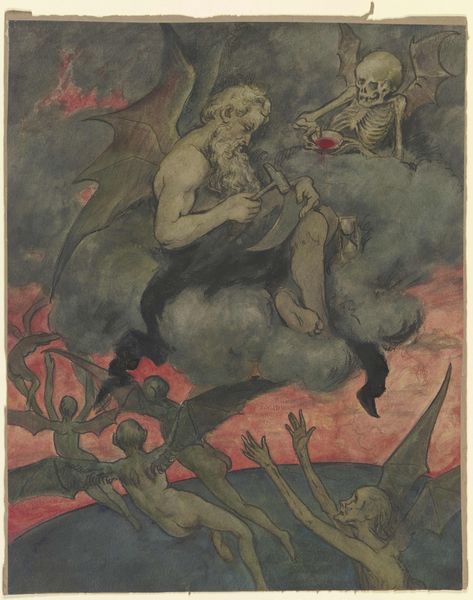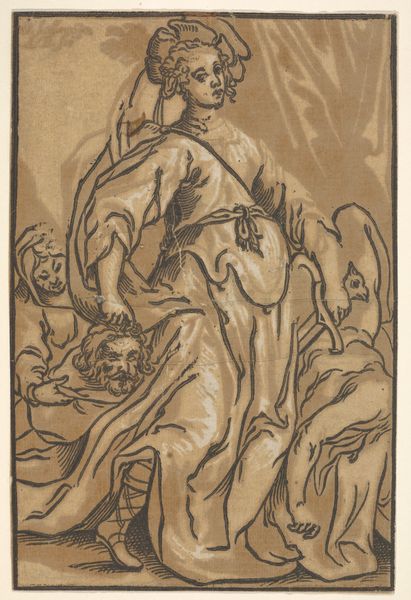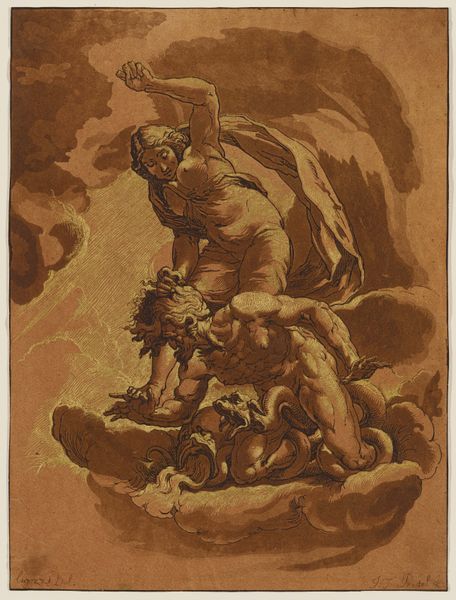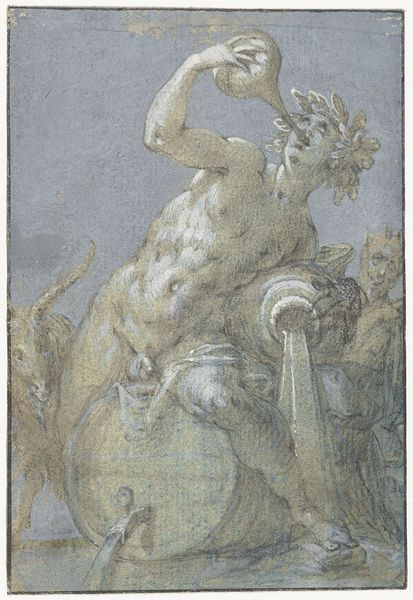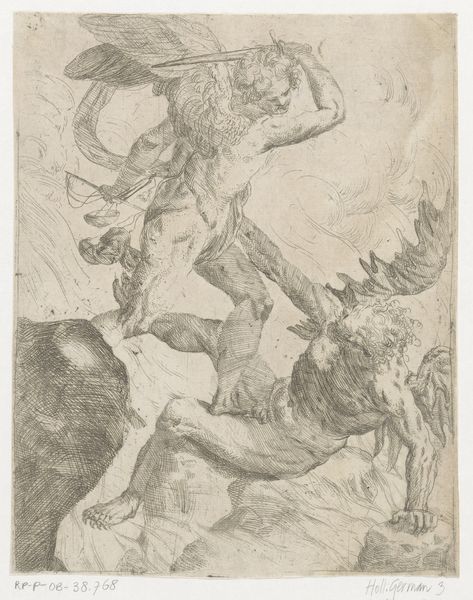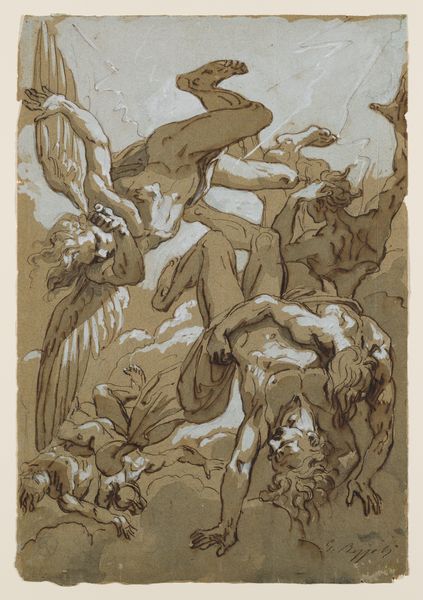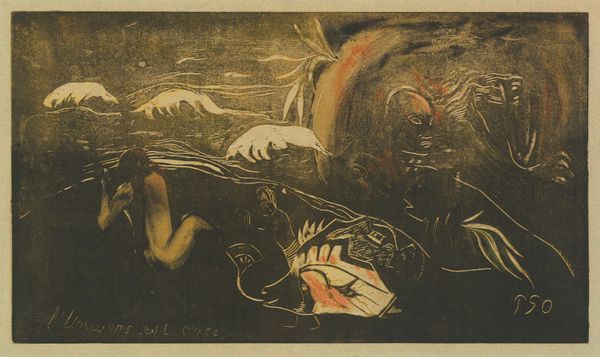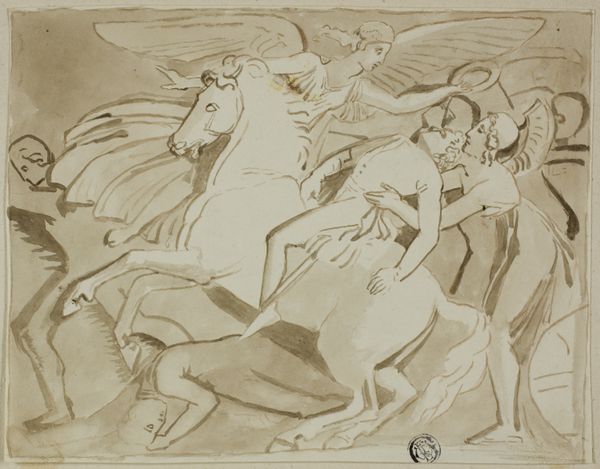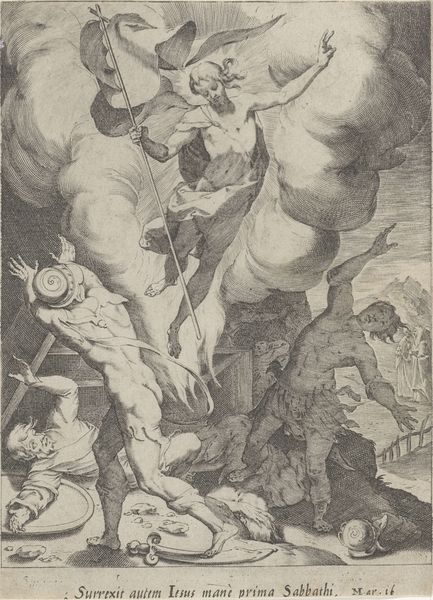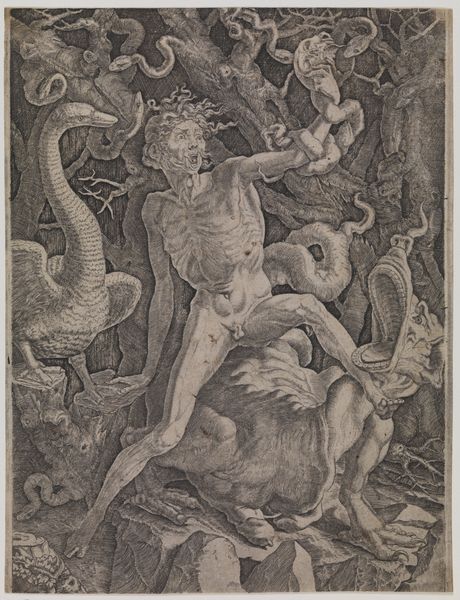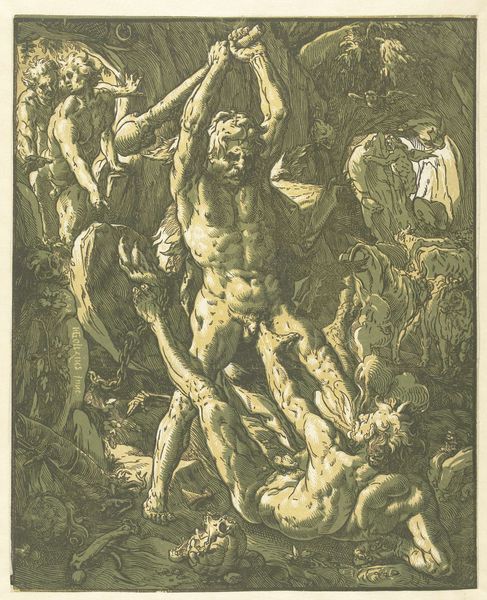
lithograph, print, poster
#
art-nouveau
#
narrative-art
#
lithograph
# print
#
figuration
#
symbolism
#
cityscape
#
poster
Dimensions: height 980 mm, width 1350 mm
Copyright: Rijks Museum: Open Domain
Curator: Standing before us is Th\u00e9ophile Alexandre Steinlen's lithograph, a poster designed in 1900 for the journal 'Le Petit Sou'. Editor: It's...intense. The upward diagonal composition and high contrast create an immediate sense of urgency. There is something unsettling about the color choices, too. Curator: Let's unpack the socio-political context a bit. 'Le Petit Sou' was a radical paper, and Steinlen, deeply involved in leftist politics, frequently depicted the lives of the working class. Editor: The chained figures dominate the foreground, undeniably. But that city silhouette in the background, perhaps Montmartre, with the Sacré-Cœur looming—it provides an interesting, if ambiguous, counterpoint. Are we meant to see the Church as part of the oppression, or a symbol of hope? Curator: Consider Steinlen’s process: lithography allowed for mass production and dissemination of such imagery. This artwork became a tool for social commentary, directly engaging with public discourse concerning class inequality, in order to engage and motivate. The artist labored to reveal laborers at work! Editor: Yet, structurally, the strong lines and dramatic lighting owe as much to Art Nouveau as they do to socialist realism. The allegorical figures are presented monumentally which imbues the whole poster with symbolic gravity, and echoes historical painting. It directs how we should feel. Curator: But it is the faces, I believe, that capture Steinlen’s true aim. Note the distinct rendering of each—the grim determination of the worker contrasted with the anguished cry of the woman. These differences emphasize the individual stories within the collective struggle. Editor: True, and despite the rather muted color palette, it avoids any sense of tonal flatness due to the meticulous rendering of textures. And you can't ignore how effectively those broken chains symbolize a specific sociopolitical moment: breaking free from economic oppression. It functions brilliantly. Curator: Absolutely. A remarkable fusion of art, politics, and the lived experience of fin-de-siècle Paris. Editor: Yes. Regardless of his own biases, it remains a powerful statement about revolution, class struggle, and the burden of freedom. Aesthetically intriguing too!
Comments
No comments
Be the first to comment and join the conversation on the ultimate creative platform.
